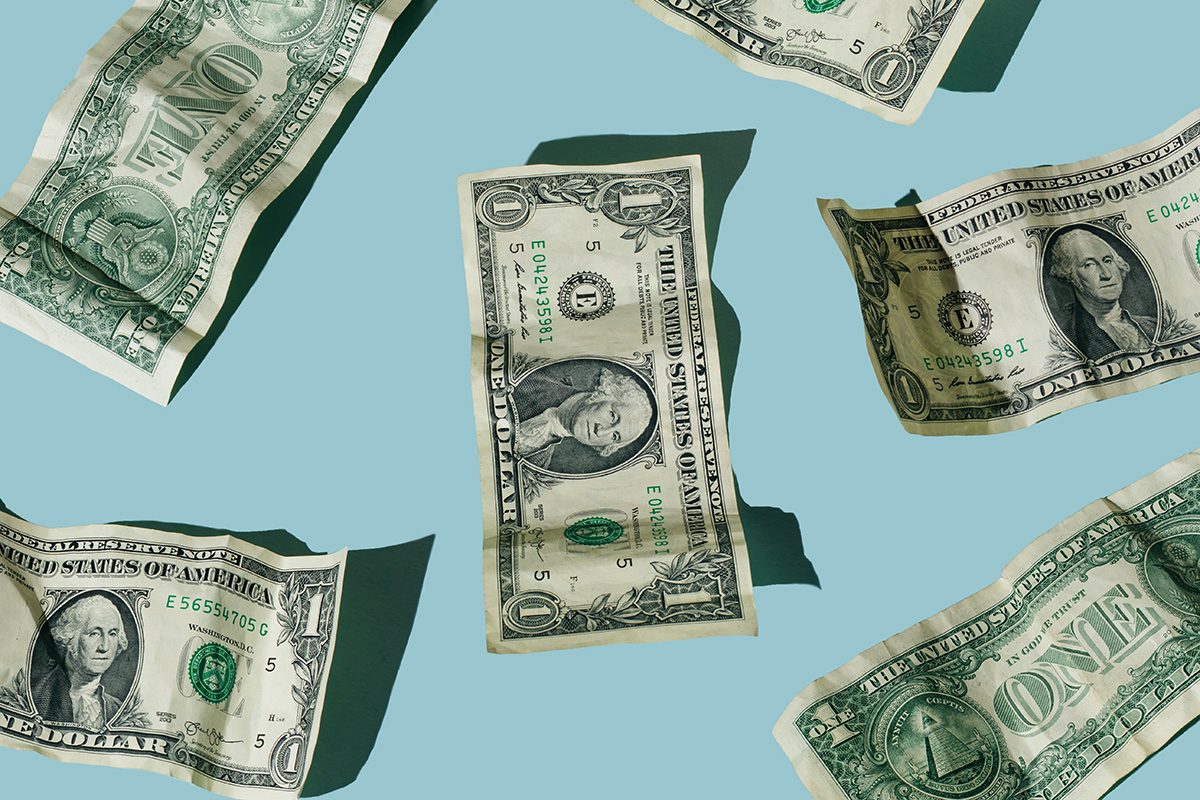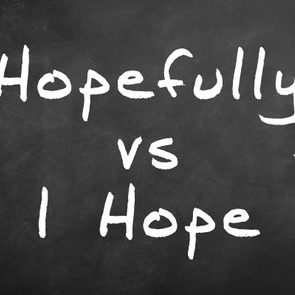This is quite the word mystery, my deer

Here’s Why a Dollar Is Nicknamed a “Buck”

We use the word buck in place of dollar all the time—at the grocery store, in the movies, at work. “That’ll be five bucks.” “She makes big bucks.” “Trying to save a few bucks.” It rolls off the tongue so naturally, you probably don’t even think about it.
But have you ever stopped to wonder: Why do we call a dollar a buck? The truth is, this one-dollar nickname has roots that stretch back centuries—long before modern currency or credit cards, and long before a buck had anything to do with money at all.
So, where did buck come from, and how did it earn its place in our everyday speech? To cash in on the origin of this slang term, I turned to Grant Barrett, a linguist, lexicographer and co-host of A Way with Words, a national radio show about language.
Ready to cash in? Read on to discover how buck became the real deal in American slang.
Get Reader’s Digest’s Read Up newsletter for more grammar, humor, travel, tech and fun facts all week long.
Why do we refer to a dollar as a buck?

As is the case with many colorful phrases, there’s no definitive origin story explaining why buck became the go-to alternative to dollar. There are, however, a few competing theories. Let’s take a look at them and see which gives us the most bang for our buck.
Buckskin
The most widely accepted theory points to buckskin—specifically, the skins of male deer. In the early days of North American colonization, when settlers traded goods with the Native Americans, animal pelts were used as a form of currency. “Buckskins were commonly used as an element of barter, even as far back as the 1740s,” says Barrett.
Early records from traders and pioneers during the 18th century frequently mention prices being listed in bucks. “They were kind of stacked like paper money, and you would trade a buck for this and a buck for that, and a buck would be one deer skin,” he adds. So when someone said something cost a buck, they literally meant it cost one pelt. The slang term carried over seamlessly into the emerging cash-based economy, and buck evolved into an actual dollar.
Buck knife
Another theory, according to Barrett, comes from the world of poker, circa the 1800s. “The device you use to know whose turn it is to make the big ante in poker, at one point, was called a buck knife because the handle was made out of the horn of a buck. It was called the buck, and you would pass that around.” This practice led to the phrase “pass the buck” (first recorded in the literal sense in 1865, per the Oxford English Dictionary; the figurative sense shows up in 1912).
Later, the buck horn knife marker was sometimes replaced with a silver dollar, also known as a buck. “It’s believed the term for the buck knife got passed to the dollar, and it was called the buck,” Barrett says.
This shift may have helped reinforce the association between buck and money in American slang, but as he cautions, “This is one of those things that just gets passed along and is very difficult to prove.”
Sawbuck
A third theory points not to deer hides, but to the $10 bill, once nicknamed a sawbuck due to the large Roman numeral X printed on it. A sawbuck is also a wooden frame shaped like an X, used to hold logs for sawing. Some speculate that the slang term buck was later back-formed from sawbuck to refer to a single dollar.
But most language historians, including Barrett, don’t buy this theory, mainly because of the timing. “The problem is that buck, referring to $1, is much older than sawbuck,” he says. “So what we have here is a reinforcement and borrowing.”
How long have Americans been using the term buck to mean a dollar?
The word buck began appearing in trade and frontier contexts as early as the 1740s and 1750s, well before the U.S. dollar was officially adopted in 1792. The Oxford English Dictionary cites 1856 as the earliest written record of buck meaning a dollar, but oral use almost certainly predates that.
By the early 1800s, buck had become a widespread, everyday slang term for one U.S. dollar.
Why did this term stick?
Buck likely stuck because it was short, punchy and easy to use—a hallmark of American slang. It also had strong roots in daily trade and frontier life, where simple, direct language was favored.
Over time, buck became not just functional but cultural. It appeared in everything from Western novels to cowboy movies to modern advertising, solidifying its place in the American lexicon. And like many slang terms, once it was widely adopted, it became nearly impossible to shake. “Buck is kind of like the word cool in that it has always stayed slang,” says Barrett. It’s now the go-to casual term for a dollar, used everywhere from checkout lines to political fundraising to movie and TV dialogue.
Barrett explains: “We’re always looking for ways to talk about money differently, because we have all these customs and rituals and polite and impolite ways to talk about money. Buck is a little bit informal, and it can take some of the crassness out of talking about money if you use a kind of informal word. Think about it: If I say, ‘You owe me 20 dollars’ or I say, ‘You owe me 20 bucks,’ which one sounds just a little bit less demanding?”
Are Americans the only ones to use the term buck?
Mostly, yes. The term buck as a synonym for a dollar is distinctly American in origin and usage. That said, due to America’s global influence, the term is recognized internationally, especially in countries where U.S. dollars are in circulation or where American pop culture is widely consumed.
According to Barrett, Canadians occasionally use buck, in reference to their dollar, but “usually they just call it a loonie” (after the solitary loon pictured on the country’s $1 coin).
What are some expressions containing the term buck?
We’re all familiar with the famous President Harry Truman quotation, “The buck stops here,” which signaled that he took full responsibility for the actions of his administration. But there are a few other common sayings that include the word buck:
- “A buck short and a day late”: Late and unprepared
- “Bang for your buck”: Good value for the money spent
- “Big bucks”: A lot of money
- “Make a quick buck”: Earn money easily or quickly, often with minimal effort
- “Chasing bucks”: Pursuing money, often at the expense of something else
From the frontier to the grocery store, buck has earned its place in the American language, and it doesn’t look like it’s going anywhere anytime soon. So the next time you hear someone say “five bucks,” you’ll know they’re not just talking money: They’re echoing centuries of linguistic history.
RELATED:
- Here’s How Much You Need in Your Savings Account to Retire in Every State
- New Report: This Is the Best Place to Retire in the U.S. If You’re Short on Cash
- This One Common Habit Could Be Depleting Your Retirement Savings—Just Before You Really Need the Cash
About the expert:
|
Why trust us
At Reader’s Digest, we’re committed to producing high-quality content by writers with expertise and experience in their field in consultation with relevant, qualified experts. We rely on reputable primary sources, including government and professional organizations and academic institutions as well as our writers’ personal experiences where appropriate. We verify all facts and data, back them with credible sourcing and revisit them over time to ensure they remain accurate and up to date. Read more about our team, our contributors and our editorial policies.
Sources:
- Grant Barrett, linguist, lexicographer and co-host of A Way with Words, a national radio show about language; phone interview, July 9, 2025
- Britannica: “Why Is a Dollar Called a Buck?
- Investopedia: “Buck: Definition as Money, History, and Value”
- Online Etymology Dictionary: “Buck”
- Oxford English Dictionary: “Buck”























